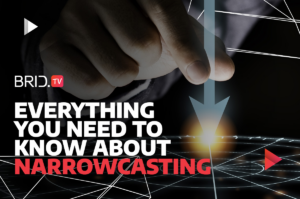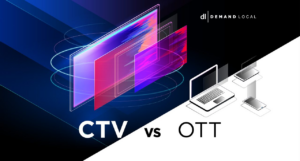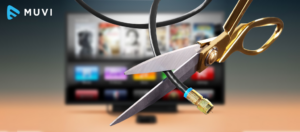Streaming devices have revolutionised the way we watch TV and movies at home. A streaming device is a small hardware device that allows you to stream audio and video content over the internet onto your TV.
Some of the most popular streaming devices include Roku, Amazon Fire TV, Apple TV, and Chromecast. These plug-and-play devices connect to your TV through HDMI and connect to the internet through WiFi or Ethernet.
They give you access to a wide variety of streaming services like Netflix, Hulu, Prime Video, Disney+, HBO Max and many more.
Streaming devices offer a convenient and affordable way to watch your favourite shows, movies, live TV, and more without the need for cable or satellite subscriptions.
Their popularity has skyrocketed in recent years as cord-cutting becomes more prevalent.
This article will explore streaming devices in-depth including their features, types, pros and cons, and frequently asked questions.

Types of Streaming Devices
Set-Top Boxes
Set-top boxes like Roku, Amazon Fire TV, and Apple TV are self-contained streaming players that sit on top of or near your TV.
They come with a remote and connect to your TV via HDMI cable. Set-top boxes run their operating system and have an intuitive interface to access various streaming services.
They also have features like the ability to download apps, mirror content from your smartphone, and cast videos. Higher-end models support 4K video and HDR. Overall, set-top boxes provide the complete streaming experience.
Media Streaming Sticks
Media streaming sticks like Roku Streaming Stick, Fire TV Stick, and Chromecast plug directly into the HDMI port on your TV.
They are portable, affordable options to make any TV smart. Streaming sticks are powered through your TV’s USB port or via a wall adapter.
They offer the most popular streaming apps but lack the advanced features of set-top boxes. Streaming sticks work well for casual streaming.
Smart TVs
Many new smart TVs have streaming capabilities built-in. From budget models to high-end OLED TVs, most smart TVs come pre-loaded with apps for Netflix, Prime Video, Disney+, and more.
Some also give you the ability to browse live TV channels through services like YouTube TV and Hulu Live.
The streaming experience on smart TVs may not be as smooth or feature-rich compared to dedicated streaming devices. But they provide good enough access for basic streaming needs.

Game Consoles
Modern game consoles like Xbox One, PlayStation 4, and 5 also double up as streaming devices. They have apps for all the major streaming services. Some like Xbox even offer live TV subscription options.
While not their primary purpose, consoles can easily stream shows and movies in addition to games. Their powerful hardware also supports 4K HDR streaming. However, you need to pay for online gaming subscriptions to access streaming features.
Pros of Streaming Devices
- Provide easy access to streaming services without the need for cable/satellite box
- Compact and affordable (streaming sticks start at $20)
- The intuitive interface makes finding content fast and frictionless
- Great for cord-cutters who want to ditch traditional pay TV
- Ability to stream 4K, HDR, and Dolby Atmos audio (on supported devices)
- Portable so you can stream anywhere there is a TV with HDMI input
- Can turn any TV into a smart TV
- No monthly rental costs for devices like a cable box
- Access to free TV channels and free movies/shows through apps
Cons of Streaming Devices
- Require stable high-speed internet connection to stream properly
- Require subscription to streaming services like Netflix and Amazon Prime
- Limited or no ability to access live cable TV channels
- Not all models support the latest video formats like 4K, HDR10, Dolby Vision
- Storage is limited for downloading movies/shows for offline viewing
- Streaming quality is subject to internet connection speed/bandwidth
- Maximum video quality lower than Blu-Ray discs
- Single stream limited to the device’s maximum resolution (4K, 1080p, etc)
Popular Streaming Services Supported
Most streaming devices today support all or most of the major streaming services:
- Netflix: Extensive on-demand library of movies, shows, comedy specials and Netflix Originals. Basic plan starts at $9.99 per month.
- Hulu: Offers a large catalog of TV shows, movies plus live TV channels. The ad-supported basic plan costs $7.99 per month.
- Amazon Prime Video: Comes bundled with Amazon Prime subscription. Large collection of movies, shows, and award-winning Amazon Originals.
- Disney+: Offers Disney classics, Pixar films, Marvel movies, Star Wars library and new original content. $7.99 per month.
- HBO Max: Home to HBO shows, DC movies, TCM classics, and exclusive Max originals. $14.99 per month.
- YouTube TV: Live TV streaming service with over 85+ channels. $64.99 per month.
- Apple TV+: Apple’s streaming service with original shows and movies like The Morning Show, Ted Lasso, See. $4.99 per month.
Many other niche services like ESPN+, discovery+, Peacock, and Paramount+ are also available. Most streaming devices also let you install free streaming apps like Pluto TV, Tubi, The Roku Channel, etc.

Buying Considerations for Streaming Devices
Here are some key factors to consider when choosing a streaming player:
- TV Compatibility: Make sure the device supports your TV’s resolution and HDR formats. Newer TVs pair best with 4K HDR streaming devices.
- Content Apps: Check the device has all the streaming services and apps you want. Roku and Amazon devices have the most diverse app support.
- Interface: The interface should be intuitive and easy to navigate with the remote. Try out demo units in stores.
- Remote: Simple remotes are the easiest to use. Some high-end models have advanced voice remotes and features like private listening.
- Portability: If moving the device between rooms, get a compact streaming stick instead of a set-top box.
- Gaming: If you want casual gaming, look for models that come with a gaming controller and have a game store.
- Price: Streaming sticks start at $20 while high-end 4K models cost over $100. Buy based on your budget and the features needed.

Frequently Asked Questions (FAQ)
Q1. What is the difference between streaming devices and smart TVs?
Ans. Smart TVs have built-in apps to access streaming services directly. Streaming devices are external pieces of hardware that you connect to a TV to add streaming capabilities. Smart TV apps can become outdated over time while streaming devices are easy to swap and upgrade.
Q2. Do I need high-speed internet for streaming?
Ans. Yes, a high-speed broadband internet connection is recommended for smooth streaming performance. For 4K streaming at least 25 Mbps is preferred while 1080p streaming requires 5-10 Mbps speeds. Slow internet can lead to buffering issues.
Q3. Can I watch live TV channels on a streaming device?
Ans. Services like Sling TV, Hulu Live TV, and YouTube TV allow you to stream live TV including sports and news on streaming devices. Some also offer DVR features to record shows. However, channel availability is limited compared to traditional cable/satellite.
Q4. Are streaming devices secure for personal data?
Ans. Streaming devices collect limited personal data for functionality purposes. Avoid entering payment info directly into the device. Use strong WiFi passwords and update device software regularly for security. Enable settings like automatic sign-out for additional protection.
Q5. What are the most popular streaming devices?
Ans. Roku and Amazon Fire TV have the largest market share with affordable and feature-rich devices. Other popular options include Apple TV for the iOS ecosystem, Chromecast for Google and Android fans, and NVIDIA Shield for gaming enthusiasts. Ultimately choose based on your budget, features needed, and brand preference.



